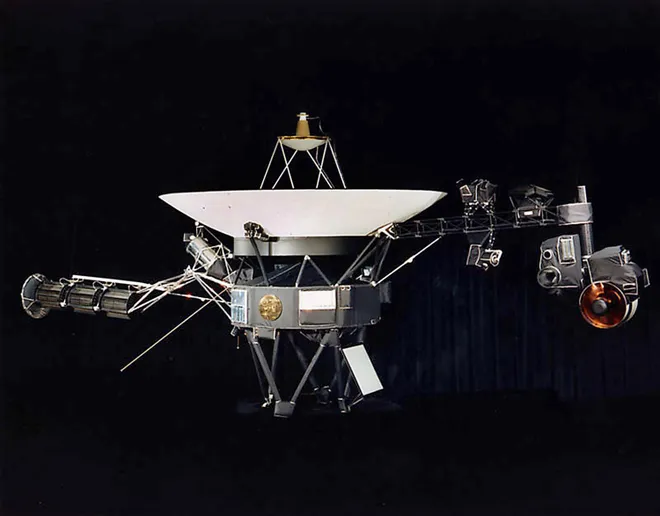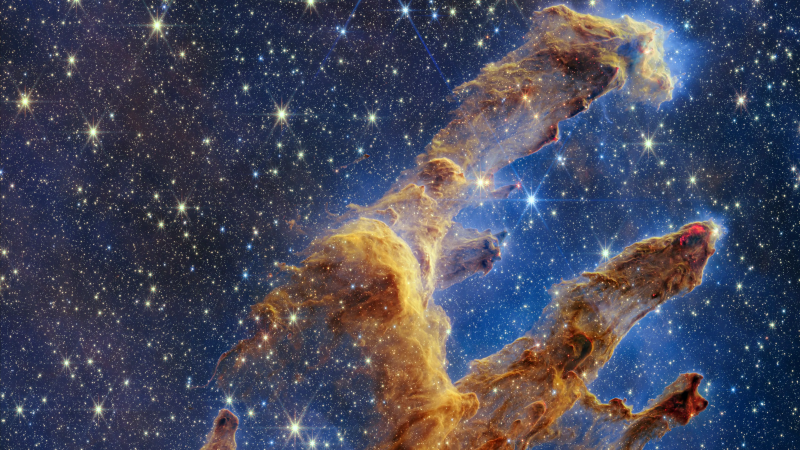A 'shout' across interstellar space restores contact between Voyager 2 craft and NASA

After weeks of giving Earth the silent treatment, NASA's Voyager 2 spacecraft is once again communicating with mission control from billions of miles away.
All it took was for the ground team to send an interstellar "shout" across more than 12.3 billion miles instructing the historic probe launched in the 1970s to explore the far reaches of space to turn its antenna back to Earth.
Easy enough, right? Not so much.
NASA’s Jet Propulsion Laboratory wasn't even confident the command would be capable of reaching the wayward probe across the expansive solar system. Failure meant that the space agency would have been waiting until mid-October for Voyager 2 to automatically reorient itself after NASA lost contact with the 46-year-old spacecraft last month.
UFO hearing:Witnesses call for increased military transparency on UFOs during hearing
The array of giant radio network antennas known as the Deep Space Network detected a faint signal last week from Voyager 2, which on July 21 had inadvertently tilted its antenna a mere 2 degrees away from Earth. Though the signal was not strong enough for any data to be extracted, the faint "heartbeat" was enough to give NASA hope that the spacecraft was still operational.
In a Hail Mary effort, a Deep Space Network radio dish in Canberra, Australia sent out a message it hoped would somehow reach the craft and command it to correct its antenna orientation.
It took 18 and-a-half hours for the command to reach Voyager 2, and 37 hours total for mission controllers to know whether it was successful. But after what must have been dozens of tense hours, the team received science and telemetry data from Voyager 2 around 12:30 a.m. on Friday, indicating the craft remains operational and on its expected trajectory.
"NASA has reestablished full communications with Voyager 2," JPL announced, saying that the antenna has realigned with Earth.

Where is Voyager 2?
Voyager 2, which is nearly 46 years into its mission, is roughly 12.4 billion miles from Earth after leaving the heliosphere — the shield that protects the planets from interstellar radiation — five years ago, according to NASA.
The agency provides an interactive diagram tracking Voyager 2's path outside the solar system.
Historic probes launched in the 1970s
Voyager 2 was launched into space in 1977 from Cape Canaveral, Florida with the mission of exploring the outer solar system. Its twin probe, Voyager 1, launched two weeks later and at 15 billion miles away, has the distinction of being the farthest human-made object from Earth.
In 2012, Voyager 1 was the first spacecraft to reach interstellar space, followed in 2018 by Voyager 2.
Voyager 1's communications were not interrupted when a routine command sent its twin probe pointing in the wrong direction last month, disrupting it ability to receive commands or transmit data back to Earth.
Had NASA not reestablished contact, it wouldn't have been until Oct. 15 that Voyager 2 would have automatically repositioned its antenna to ensure it was pointed at its home planet.
'Internet apocalypse':How NASA's solar-storm studies could help save the web
Should they encounter extraterrestrial life, both Voyager 1 and 2 carry the famous "golden record," functioning both as a time capsule and friendly Earthling greeting. The phonograph record — a 12-inch gold-plated copper disk — contains music, languages and sounds representative of Earth's various cultures and eras.
Eric Lagatta covers breaking and trending news for USA TODAY. Reach him at elagatta@gannett.com.
Disclaimer: The copyright of this article belongs to the original author. Reposting this article is solely for the purpose of information dissemination and does not constitute any investment advice. If there is any infringement, please contact us immediately. We will make corrections or deletions as necessary. Thank you.


